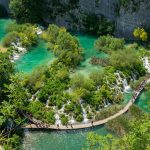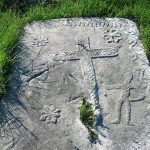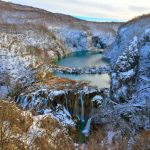A lot has been written in the past few years about the problems several Croatian famous tourist sites are facing with the ever-increasing number of tourists that have been pouring in – and now again we seem to have come to a deadline!
Total Croatia News has been following these stories closely, writing in the past about the UNESCO representatives monitoring the situation at Plitvice Lakes, about the efforts by the management to tackle the problems of excessive number of visitors and finally reporting on the fact that the Lakes have avoided being placed on the World Heritage in Danger list by the UNESCO for the time being.
However, the story of Plitvice Lakes has become an international story, with a significance much wider than just Croatia, so many international news outlets have been following the developments closely as well. So, Balkan Insight reported last year that uncontrolled tourism is threatening the UNESCO sites in the Balkans (a story not focusing on Plitvice, rather on series of problems in Plitvice, Dubrovnik, Kotor in Montenegro and Ohrid in Macedonia or whatever it’s called now). And the tourist numbers are still growing steadily, although hopefully distributed more evenly through the year and reducing the “peak” in the peak season, with increasing number of tourists who don’t really care about the heat and the sun and the sea. So, the problem seems far from fully resolved, and media stay interested in what can be done to remedy the situation. In that vein, balcanicaucaso.org portal (run by the think-tank OBC Transeuropa, Osservatorio Balcani e Caucasso) and their journalist Giovanni Vale have devoted a whole feature story to the problem.
The article stresses that there are 4 key problems at Plitvice, which are endangering their position on the UNESCO lists, but more importantly, their future: tourism, traffic, pollution, and constructions. All of them tie into the tourism problem, of course, and Helena Petković, a tour guide who talked to Vale about Plitvice says that the construction of new objects (mostly designed to cater to tourists) is the construction of what she says are “hundreds and hundreds of new houses around here, all of which built in the last five years”, being built just adjacent to the National park (or sometimes even within its boundaries). Another crucial problem is the pollution of the waters of the lakes, and the Korana River which flows out of the lakes, caused by various factors, including all those houses being built without proper solution for their waste-water management. While neither of the past governments seems to have done any serious work to mitigate the damage, they answered Vale’s questions saying that “We believe that UNESCO will recognise our efforts and the intense work undertaken in all sectors”.
What they are hoping for is that UNESCO will accept their answers, which they were supposed to send by February 1st, detailing the work they’ve done and their plans for protection in the future, and that no significant changes to the status of the park will happen at the UNESCO World Heritage Committee meeting, which is to take place between June 24 and July 4 in Bahrain.










